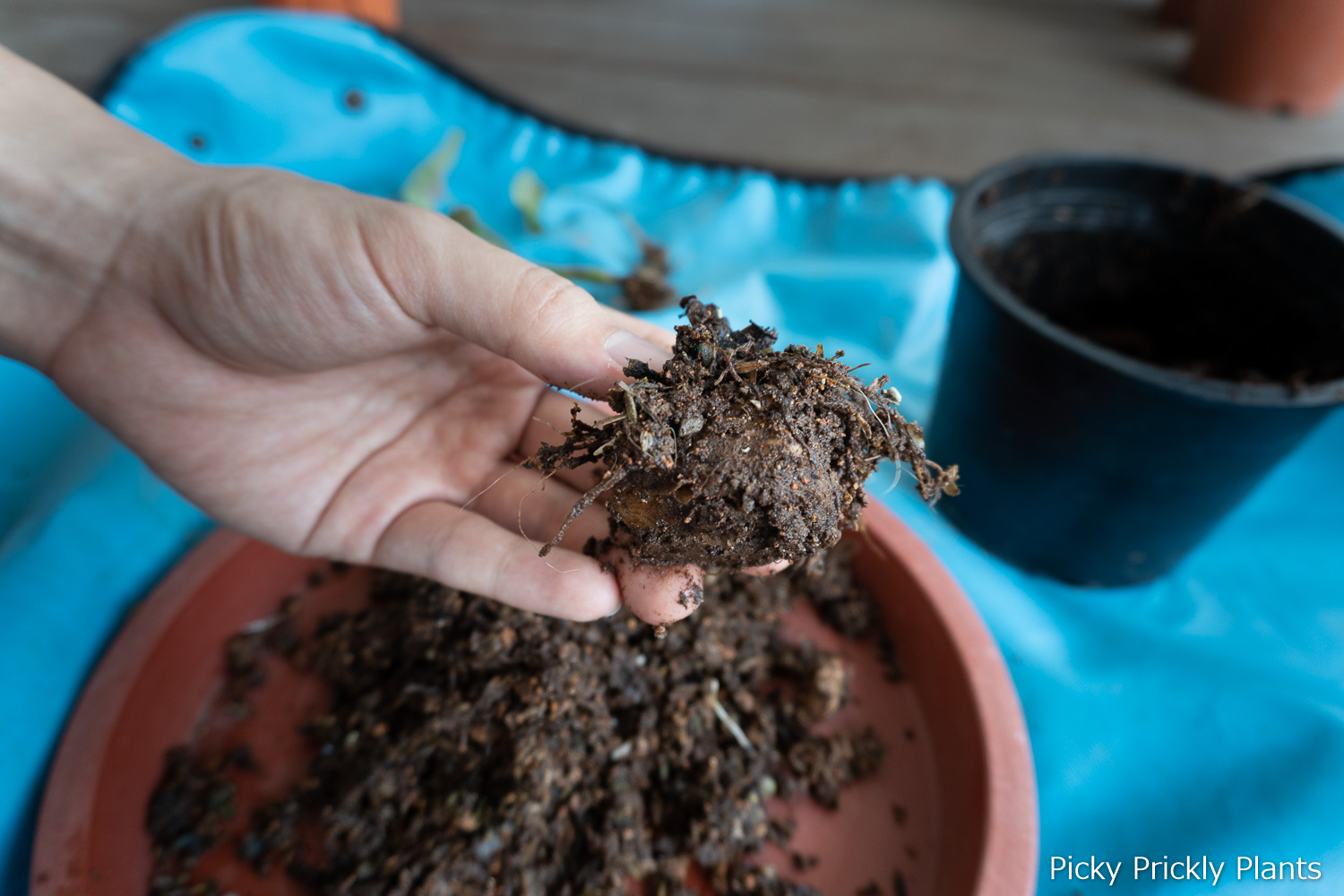Caladiums are beautiful plants with vibrant coloured and patterned leaves. However, the leaves do not last forever. It is normal for caladiums to go into dormancy and its frequency depends on your climate. Letting your caladiums rest will result in strong and lusher foliage the next season. We will show you how to spot when a caladium is going dormant and what you can do to help it prepare for its well-deserved rest.
When do caladiums go dormant?
In temperate countries where they have seasons, caladiums usually go dormant when the temperatures drop and the days shorten during autumn and winter. During spring and summer, they spring back to life. This is likely an adaptation for them to survive in the cold seasons as its often warmer in the ground. In the tropics where it is warm and sunny all year round, they also do go dormant once in a while. It could be due to slight changes in temperature or the sun changing its path.
How do you tell if a caladium is going dormant?
When the big leaves start to yellow and die off
It usually starts when you see that the large leaves start to dry out and droop down. The growth of the plant slows down and it is not able to replenish the dead leaves.
The new leaves are small and weak
The plant might still be pushing out new leaves but they are small and nothing compared to the ones that you see when they first sprouted.

Should I dig my caladium bulbs up?
If you live in a place with a freezing winter, it is crucial that you dig the bulbs out. like how we are going to show you. Nearer to the equator, there is actually no need to do so as the bulbs will just rest and shoot out new growth once it is ready. However, there are benefits to digging the bulbs out.
Check for pests like root mealybugs

One grower told us that he had once a few pots of prized caladiums that got its roots and bulb totally eaten up by root mealybugs. These pesky bugs crawl from the draining holes pot to pot and because they feed on roots, you will only know after your plants look unhealthy. If you mistook it for a caladium going into its dormancy period and not check it, the bugs will quickly devour the entire bulb.
Clean and remove dead roots
Another good practice is to trim off dead roots and plant matter around the bulb. Because we grow caladiums in soil that is moist most of the time, they are also prone to fungal infections and root rot. It is thus beneficial to give the bulbs a good wash and dry it out.
Change out the soil
When re-using soil, there might be an issue with salt build-up and a lack of nutrients. Caladiums are sensitive to excessive salt in the soil and will show signs of drooping and yellowing of leaves. Digging up the bulb and re-potting in a new media is a good way to start afresh.
How to care for your dormant caladium bulbs?
Dig them out of the soil

Use a spade and gently dig out the bulbs. It is fine to break the root hairs since we will be trimming them off later. This is a good time to inspect the soil for mealybugs. They will look like white spots near the roots.
Clean the bulb
Use a pair of sharp scissors to trim off the dead roots around the bulb. It is also a good idea to snip off growing leaves to fully prepare them for their rest. Under running water, rub and wash away the dead plant matter till you see a brown bulb. Leave it in a windy area or in front of a fan to dry the bulbs out.
Store the bulbs in a cool place

Store the dried up bulbs in a cool and dark place until you are ready to plant them. Depending on your cultivar, an estimation for the growing season is around three months of rest for another five months of lush leaves.
When is it time to plant caladium bulbs?
If you are living in a temperate climate, the best time to plant them in early spring when the temperature rises and the daylight is longer. In the tropics, some growers place the bulbs in a cool and dark environment until roots start to appear before they plant it. Others let it rest outside for a few weeks before planting back in the soil but leaving the pot in a cool place and only watering it sparingly.
Find out how we plant caladium bulbs next!
Check out our 3rd October 2020 update to see how these bulbs have grown!


One thought on “How to tell if your caladium is going dormant?”